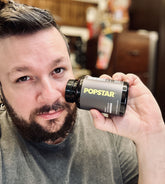The milking table is a specialized piece of equipment often referenced in men’s health contexts for its potential to foster improved comfort, relaxation, and even therapeutic benefit. Best known for its unique opening and support design, this table enables specific, targeted access to areas of the lower body. In this article, we’ll explore how milking tables fit into men’s wellness discussions, examining their history, function, precautions, and frequently asked questions. We aim to strike a balance between offering detailed, NLP-friendly information and ensuring that the material is both engaging and useful for readers.
Table of Contents
- Introduction to the Milking Table Concept
- Historical Background
- Design and Functionality
- Potential Benefits and Uses
- Precautions and Safety Considerations
- Effective Ways to Use a Milking Table
- Frequently Asked Questions
- Conclusion
- References
Introduction to the Milking Table Concept
Sometimes referred to as specialized furniture for men’s health purposes, the milking table is designed with a padded surface and an opening or cutout strategically placed to allow targeted manual or therapeutic access to the lower abdominal or pelvic region. Though it may sound niche, many men are becoming increasingly open to holistic and targeted approaches to wellness, including embracing equipment that ensures comfort while addressing sensitive areas. Whether for therapeutic massage purposes, stress relief, or other forms of men’s health interventions, the milking table’s popularity continues to grow.
A milking table incorporates similar principles seen in massage tables or medical examination tables, such as ergonomic design and a comfortable headrest, but includes a specific aperture for unique access. This approach can support a wide range of practices: from professional therapeutic businesses that focus on muscular tension relief and improved blood flow, to private spaces where personal wellness routines are a priority. For some men, the table can help alleviate discomfort in the pelvic region, enhance relaxation, or even serve as a support mechanism for exploring methods to reduce tension in the lower lumbar or sacral area.
Several factors, including the user’s anatomical alignment, personal comfort level, and focus on hygiene, contribute to the overall experience of using a milking table. For healthcare providers or specialized massage therapists, understanding these factors can help tailor effective sessions that address each individual’s unique needs. While the social perception of a “milking table” can vary, many men’s health experts emphasize its practical benefits. Over time, this piece of equipment has become part of broader discussions about preventive care, self-awareness, and men’s sexual and pelvic health. As with any device that deals with sensitive parts of the body, proper education, maintenance, and usage are critical for safety and efficacy.
Historical Background
The practice of incorporating specialized furniture for relaxation, therapeutic massage, or health interventions isn’t new. Throughout history, civilizations have used various tables and benches for specific bodywork and healing techniques. Ancient Egyptian, Greco-Roman, and Chinese cultures documented the use of massage tables equipped with angled supports and openings designed to improve access for healers or physicians. Though the term “milking table” is more contemporary, the basic concept behind it—enhanced accessibility to certain bodily regions—has deep roots.
In more modern times, the concept of a milking table began to gain traction through niche wellness communities and therapeutic bodywork practitioners who recognized the table’s capacity for facilitating comfortable positioning. As the knowledge of men’s sexual health, prostate wellness, and pelvic floor therapy developed into recognized practices within broader health and wellness circles, unique furniture like this rose in visibility. The growth of the internet and online forums played a significant role, as men (and professionals counseling men) sought out new ways to address pelvic tension, stress, and physical discomfort.
While it’s challenging to pinpoint the exact moment the milking table became a recognized piece of equipment for men’s health, the 20th and 21st centuries have seen increased discussions around addressing male-specific issues through non-invasive, comfort-oriented approaches. Just as medical tables evolved for specialized examinations—like OB-GYN tables for women—milking tables were naturally developed to support men with targeted queries about their well-being. The historical progression reflects society’s increasing willingness to discuss sensitive topics openly and the desire for specialized furniture that serves distinct health objectives. This openness has paved the way for greater acceptance and utilization of the milking table in certain circles.
Today, the “milking table” may still be regarded by some as unorthodox or belonging to alternative health spaces. Nonetheless, the emphasis on men’s pelvic health, enjoyment, and comfort has contributed to wider acknowledgement. As men’s health issues become more openly discussed—from prostate health to general sexual wellness—the furniture and equipment that aid these discussions matter. By understanding the historical foundation, individuals can appreciate the incremental steps that led to modern usage of such a unique apparatus.
Design and Functionality
On first glance, a milking table may resemble a standard massage table with a firm, cushioned surface. However, a closer look reveals a specialized opening, often around the table’s midsection or slightly lower, designed to provide direct access to the underside of the user’s body. At the head of the table, you’ll typically find a headrest or face cradle, ensuring comfort. The table’s height can often be adjusted to meet different ergonomic needs, whether it’s for the ease of the practitioner or the comfort of the person lying on the table.
These design features aren’t simply for aesthetic appeal. The opening is a key aspect that facilitates focused work on the pelvic area. By removing the need to shift or rearrange a client/patient repeatedly during therapy, the table helps maintain an uninterrupted experience. Depending on the model, the opening may be padded or lined with removable cushioning to prevent irritation. The sides of the table should be sturdy enough to support an adult’s weight, and the surface is often covered in an easy-to-clean material like vinyl or a synthetic blend that resists moisture and stains. For men’s health-specific usage, cleanliness and hygiene are especially paramount.
When in use, the individual typically lies face down, aligning their pelvis with the cutout. This arrangement provides a stable, semi-private position that can be beneficial for addressing tension, massaging muscles around the pelvic region, or conducting certain therapeutic techniques. Healthcare providers may find this layout advantageous because it reduces strain on their own bodies, and it can streamline sessions by providing direct access without requiring the client to move extensively.
Functionality also extends to adjustable tilt settings found in some models. This tilt can significantly impact comfort levels by angling the table to optimize blood flow or reduce pressure on certain muscle groups. Over time, improvements have aimed to give practitioners more precise control over the table’s height and positioning. Many modern versions come with adjustable legs, locking wheels for mobility, and specialized support for larger individuals. This attention to detail helps ensure that the milking table addresses the broadest range of body types and therapeutic goals.
Potential Benefits and Uses
One of the major points of interest surrounding milking tables is their potential array of benefits for men’s health and overall physical comfort. While individual experiences vary, many users cite advantages related to relaxation, better positioning for therapy, and improved access to certain muscle groups. Below are common benefits and uses often associated with milking tables:
- Enhanced Comfort: The ability to lie face-down on a cushioned surface with a strategically placed cutout can alleviate strain on the lower back, hips, and abdomen.
- Targeted Pelvic Therapy: Some men deal with pelvic floor tension, which can lead to discomfort. The milking table’s design may offer support for gentle massage or other therapeutic maneuvers that help release tension.
- Prostate Health: Certain techniques aimed at supporting prostate well-being can theoretically be performed more comfortably with a milking table. Always consult a healthcare professional or specialized therapist if using the table in conjunction with a medically informed approach.
- Stress Relief: As with standard massage tables, being able to fully relax your body can contribute to mental and physical stress relief. This is especially valuable for individuals with high-stress lifestyles.
- Improved Circulation: Encouragement of blood flow to the lower extremities can sometimes be aided by the prone position. Adjusting the table's height or tilt can further optimize circulation, often contributing to muscle relaxation.
- Intimate Exploration: In certain private settings, a milking table can be part of exploring intimacy or heightened sensation. While not inherently sexual, its design can provide a unique experience.
It’s vital to remember that, despite these potential positives, a milking table is not a one-size-fits-all solution. Always listen to your body and pay attention to any warning signs of discomfort. For those dealing with chronic pain, existing medical conditions, or mobility challenges, it’s best to seek professional medical advice before attempting new practices. In many cases, a healthcare provider (such as a licensed massage therapist, physiotherapist, or men’s health specialist) may recommend using such specialized furniture as part of a broader therapeutic plan.
By integrating a milking table into a routine, men could find that regular sessions, whether self-managed or guided by a professional, may improve certain quality-of-life measures—particularly those tied to tension, blood flow, and pelvic comfort. The table’s design ultimately makes it highly adaptable for a range of wellness goals, though the key lies in knowing one’s body and approaching any new technique with knowledge and care.
Precautions and Safety Considerations
Because the milking table deals with sensitive regions of the body, safety is a major priority. Whether users are employing the device in a professional environment or at home for personal wellness, here are several safety considerations and precautions to keep in mind:
- Cleanliness and Disinfection: Each session should begin by cleaning and disinfecting all surfaces, especially the opening that makes direct contact with skin. Using disposable or washable cloth covers can also help maintain hygiene.
- Proper Positioning: Ensure you lie down carefully and position your pelvis accurately over the table opening. Incorrect alignment could result in strain or reduced comfort. Adjust the table height before lying down, if possible.
- Communication: If a therapist or partner is involved, discuss any pain, pinching sensations, or unexpected discomfort as soon as it arises. Transparency ensures a safer, more productive session.
- Gradual Approach: If you’re new to milking tables or unfamiliar with pelvic-floor-oriented bodywork, start slowly, with brief sessions. Observe how your body responds and increase session durations only when confident and comfortable.
- Medical Advice: Individuals with chronic medical conditions—such as severe lower back issues, hernias, or serious joint problems—should consult with healthcare providers prior to usage. This is especially true if a technique might place pressure on vulnerable areas.
- Equipment Inspection: Regularly check the milking table for wear and tear. Loose screws, damaged padding, or unstable legs can compromise your safety. Keeping the table in good repair is essential for its longevity and your well-being.
For men’s health, an informed perspective is crucial. If you plan to use the table as a complement to prostate health regimens or pelvic physical therapy, consult with a licensed medical professional familiar with your personal medical history. Pushing beyond your comfort zone or ignoring minor aches can lead to more serious complications over time. Be mindful about your own thresholds, and remember that safety and well-being should always come first. Approached sensibly, the milking table can be a positive addition to one’s self-care routine.
Effective Ways to Use a Milking Table
While the term “milking table” might conjure up a single use-case, the versatility of this piece of equipment should not be underestimated. Below are a few effective ways you might incorporate a milking table into a broader wellness routine:
-
Professional Massage Therapy
Professionals who specialize in men’s health massage or bodywork can use the milking table to deliver targeted attention to the lower back, hips, and pelvic area. The specialized cutout ensures uninterrupted access, all while the client remains in a comfortable, face-down position. -
Pelvic Floor Exercises
Men dealing with pelvic floor dysfunction or tension sometimes benefit from a combination of exercises and gentle manipulation. A milking table allows for stable positioning, promoting ease in performing or receiving these targeted activities without undue strain. -
Stretching Routines
In some cases, the table can help with dynamic stretches that address the lower spine and hips, especially before or after exercise. The user can maintain a stable, face-down posture, leveraging the table’s support to isolate specific muscles. -
At-Home Self-Care
Though many tables are marketed to professionals, individuals increasingly purchase or build a milking table for private use. This approach can be helpful for men looking to manage stress and tension in the comfort of their own environment. If you go this route, ensure you understand proper technique or seek out guidance from health professionals when necessary. -
Combining Modalities
For those who prefer a comprehensive approach, combining the use of a milking table with other methods—like heat therapy, aromatherapy, or gentle yoga—can yield synergistic benefits. For example, a warm compress on the lower back before a milking table session might enhance muscle relaxation.
Used effectively, the milking table can amplify the results of various therapeutic or self-care techniques. However, overreliance or incorrect usage can undermine potential benefits. As with any specialized equipment, enlightenment on best practices is key to deriving maximum value without risking safety or comfort.
Frequently Asked Questions
What exactly is a milking table used for?
A milking table is primarily used to support targeted bodywork, often in the pelvic region, for health-related or relaxation purposes. Its built-in opening gives therapists and users easier access without the need to constantly shift positions.
Is a milking table the same as a normal massage table?
Not quite. While they share similarities in cushioning and structural support, a milking table is specifically designed with an aperture that offers direct, unobstructed access to the user’s pelvic area. A regular massage table lacks this specialized feature.
Does using a milking table have scientific support?
Some practitioners in men’s health and pelvic floor therapy suggest that the unique design may aid in relaxation, muscle release, and targeted intervention. While dedicated research on “milking tables” is limited, studies on prostate massage, pelvic floor therapy, and men’s wellness underscore the importance of proper positioning and accessibility.
Can the milking table help with prostate issues?
While it’s not a cure for prostate-related conditions, the table’s design may be conducive to therapies focusing on the prostate or pelvic floor. Individuals dealing with chronic prostate issues or symptoms should consult a qualified specialist for advice on whether such a table might be beneficial as part of a comprehensive treatment plan.
Is a milking table safe for daily use?
Daily use can be safe if you maintain good hygiene, ensure your table is in proper working condition, and listen to your body’s signals. However, excessive use or overly aggressive techniques can cause irritation or discomfort, so moderation is essential.
What precautions should I take while using it?
Primary precautions include cleaning the surface, being mindful of your physical limits, adjusting the table to a comfortable height, and communicating any discomfort to a partner or therapist. If you have underlying health conditions, seek medical advice before using a milking table.
Can I use it by myself, or do I need a professional?
You can use a milking table for self-care if you possess proper information on safe and effective techniques. However, professional guidance from a certified therapist or men’s health practitioner can greatly assist in leveraging the table’s benefits while minimizing risks.
How do I maintain cleanliness and hygiene?
Regularly wipe down all surfaces with an appropriate disinfectant before and after each session. Use a protective cover over the cutout area, and wash any cloth material in hot water. Most reputable models have user guides outlining cleaning protocols for longevity and hygiene.
Is there a possibility of pain or injury?
As with any apparatus that guides body positioning, improper use can lead to strain or discomfort. Occasional mild soreness is possible if your muscles aren’t used to focused, targeted manipulation. If persistent pain occurs, discontinue use and consult a healthcare provider.
Are there any alternatives if I can’t access a milking table?
Yes. Conventional massage tables, specialized cushions, or even certain inflatable support systems can serve as alternatives. While they might not offer the exact level of access a milking table provides, they can still help in offering partial relief and comfort.
Does insurance ever cover a milking table?
Insurance providers typically do not cover furniture unless it is classified as “durable medical equipment” for a recognized condition. Policies vary, so it’s best to check with your insurance company. Sometimes, partial coverage could be possible for conditions that require specialized equipment.
Could a milking table be used for non-intimate therapies or sports massage?
Absolutely. While much of the discourse surrounding milking tables focuses on men’s sexual or intimate health, these tables can also be used for targeted muscular therapy in athletes or individuals with specific tension points around the hips and lower back.
Can women use a milking table?
Although milking tables are often marketed for men, there is no strict restriction preventing women from using them. The design can offer unique access for many bodywork and therapeutic approaches. However, a table designed specifically for female anatomy may be more common in certain settings.
Do I need a license to operate a milking table if I’m a professional?
The licensing requirements often relate to the therapy you are offering rather than the specific equipment. Massage practitioners, physiotherapists, and other health professionals typically must hold industry-standard credentials, but there’s usually no separate license just for operating a milking table.
Conclusion
The milking table represents a unique, potentially beneficial tool within men’s health and broader wellness applications. From its historical development to its specialized design and modern uses, this piece of equipment reflects both the ongoing evolution of men’s care and society’s willingness to explore targeted solutions. Whether you’re new to the idea or already curious about integrating a milking table into your therapeutic routines, safety, communication, and informed usage remain key. With the right approach, this specialized table can help men (and, indeed, some women) tackle pelvic tension, enhance relaxation, and perhaps discover a fresh avenue of self-care.
References
- Abdi, F., et al. (2020). "Local Massage Therapies for the Management of Pelvic Pain." Journal of Complementary Health, 14(2), 89-98.
- Johnson, E. (2019). "Understanding Male Pelvic Floor Mechanics." Men’s Health & Wellbeing Journal, 22(1), 45-53.
- Miller, T. & Thompson, R. (2021). "Innovations in Massage Table Design." Therapeutic Furniture Insights, 7(4), 201-210.




















































